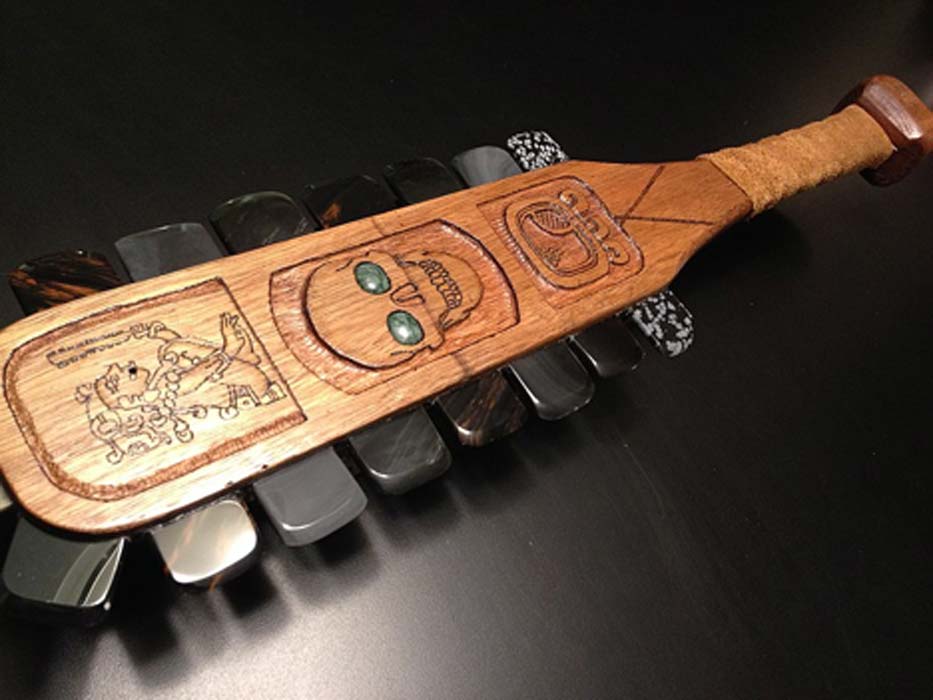
But that does not tell the whole story. If we look past the construction of a sword, towards its purpose, we do, in fact, find a capable, and indeed deadly contender for the name.

Where metal was lacking, or unknown, skilled woodworkers would fashion long paddle-like weapons made of the native hardwoods, and on each edge above the handle would be cut a groove. Inside that, and set in bitumen (A naturally occurring glue), would be shaped chunks of obsidian. Togeather, this was the Macuahuitl.

With an edge harder than glass, and sharper than a steel razor blade, The Macuahuitl left a stark impression on early Europeans who sat it in action. Reports from early explorers and soldiers in the region reported that the stone edged weapon was able to decapitate a horse, or man, or to cleave an arm or leg in like fashion. Examples recorded from period show men holding these weapons one-handed with a shield in the other, or much longer versions of them being held two-handed. The weapon's weight and power lent itself towards a hard cleaving blow, but it could also be drug across the skin of a target opening it up like a saw blade.

The precise origins of the Macuahuitl are hard to pinpoint, but it was most readily identified with the Aztec, who's militaristic culture put the weapon to good use. The use of obsidian as a cutting tool dates back millennium in the Americas, and historians differ as to what culture (or cultures) firs made the dedicated weapon part of their arsenal.
 |
| Aztec Warriors (Eagle Warrior at the left and Jaguar Warrior at the right) brandishing a macuahuitl (a wooden club with sharp obsidian blades). |
The last actual macuahuitl was destroyed in 1884 in a fire in the Real Armería (museum) in Madrid. Though artisans, archaeologists, and historians have worked to reproduce weapons in the centuries since.
| A drawing from the Catalog of the Royal Armoury of Madrid by the medievalist Achille Jubinal in the 19th century. |
Though feared, and respected, Spanish officers of the day noted that their native american reserves preferred European swords when they had the chance to use them. Though, it was also pointed out the natives were usually forbade from having those weapons as they were considered too prestigious to give to a non-European.
The macuahuitl was documented as in use as far south as modern day Argentina at the time of the Spanish conquest of south america, and as far north as modern day Mexico.
The macuahuitl was documented as in use as far south as modern day Argentina at the time of the Spanish conquest of south america, and as far north as modern day Mexico.
While not a true sword, even by academic metrics, the native american weapon of choice for close combat was none the less fearsome, and effective, very much like its counterparts in the rest of the world at the time.
His Lordship Ivo Blackhawk
Kingdom of Ansteorra
"Long Live the King!"
No comments:
Post a Comment